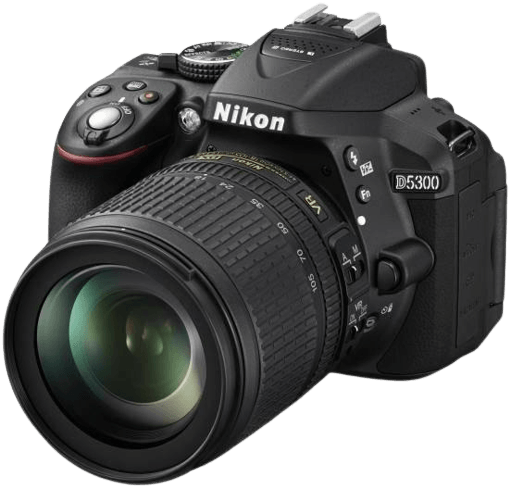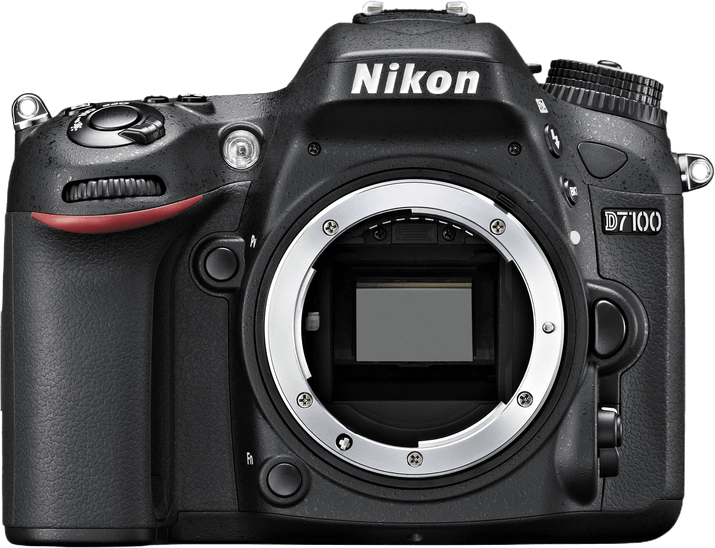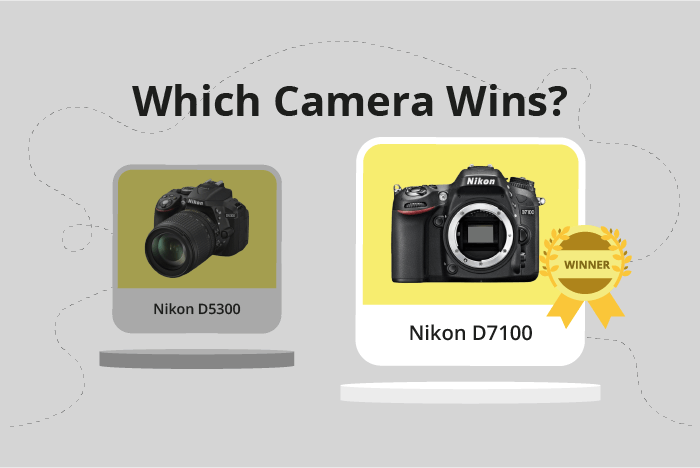Nikon D5300 vs D7100 Comparison
Nikon D5300

Nikon D7100

The Nikon D7100 outperforms the Nikon D5300 with a score of 65/100 compared to 57/100. Both cameras share similarities, being DSLR cameras released in 2013 with the same depth of 76mm. However, the D7100 justifies its higher price of $1200 compared to the D5300’s $800 with its superior specs.
The D7100’s advantages include a larger size (136 x 107mm) and heavier weight (765g), which can provide better stability and handling. On the other hand, the D5300’s smaller size (125 x 98mm) and lighter weight (480g) make it more portable and convenient for casual photographers.
To sum up, the Nikon D7100 is a better camera for those seeking higher performance and handling, while the Nikon D5300 is more suitable for those prioritizing portability and affordability.
Nikon D5300 vs D7100 Overview and Optics
The Nikon D7100 wins in optics with a score of 67/100, a narrow 2-point lead over the Nikon D5300 with a score of 65/100. Both cameras share several specifications, such as 24.1 and 24.2 megapixels, a CMOS sensor, APS-C sensor size, Nikon F DX lens mount, and no image stabilization. Additionally, both cameras have a DXOMARK sensor score of 83.
The Nikon D7100 outperforms the D5300 in shooting speed, offering 6 frames per second (fps) compared to the D5300’s 5 fps. This advantage allows the D7100 to capture fast-moving subjects more efficiently. Additionally, the D7100 uses an Expeed 3 processor, which may contribute to its faster shooting speed.
On the other hand, the Nikon D5300 has a slightly higher megapixel count, 24.2 compared to the D7100’s 24.1. However, this minor difference is unlikely to significantly impact image quality. The D5300 also features an Expeed 4 processor, which may improve its overall performance and image processing capabilities.
Despite the Nikon D7100’s victory in optics, the Nikon D5300 remains a competitive choice for photographers. Its Expeed 4 processor and marginally higher megapixel count may appeal to those seeking improved performance and image quality. However, the D7100’s faster shooting speed and higher optics score make it the superior choice for capturing fast-paced action and achieving better image quality. Both cameras offer a solid foundation for photographers, with the D7100 taking a slight lead in optics performance.
Nikon D5300 vs D7100 Video Performance
The Nikon D5300 is the winner in the video capabilities comparison, with a score of 70 out of 100, while the Nikon D7100 holds a score of 57. Both cameras share some common features in their video specifications, including a Full HD max video resolution and max video dimensions of 1920 x 1080. Additionally, both cameras have built-in time-lapse functionality.
The Nikon D5300 outperforms the D7100 in terms of video frame rate, offering a maximum of 60fps, which is double the frame rate of the D7100’s 30fps. This higher frame rate allows the D5300 to capture smoother and more detailed video, especially in fast-moving scenes or while shooting sports and action footage.
On the other hand, the Nikon D7100 does not have any significant advantages over the D5300 in video capabilities. Both cameras share the same video resolution, dimensions, and time-lapse features, with the D5300 boasting a higher frame rate.
Considering the 13-point difference in video scores and the higher frame rate offered by the Nikon D5300, this camera is the better choice for those prioritizing video performance. The D7100, while still a capable camera, does not provide any notable advantages in video capabilities over the D5300, making the latter a more suitable option for users who value high-quality video recording.
Nikon D5300 vs D7100 Features and Benefits
The Nikon D7100 emerges as the winner in the features comparison, scoring 59 out of 100 points, while the Nikon D5300 scores 46 points. Both cameras share some common specifications, such as a 3.2-inch screen size, lack of touchscreen, WIFI connectivity, and no Bluetooth capabilities.
The Nikon D7100 excels with a higher screen resolution of 1,228,800 dots, compared to the D5300’s 1,037,000 dots. This higher resolution provides a clearer and sharper display, which benefits photographers in reviewing images and navigating the camera’s menu.
On the other hand, the Nikon D5300 has a flip screen and GPS functionality, both of which are not present in the D7100. The flip screen offers more flexibility in shooting angles, allowing photographers to capture images from challenging perspectives. The GPS feature enables automatic geotagging of photos, which is useful for travel photography and location-based documentation.
While the Nikon D7100 has a better overall feature score and screen resolution, the Nikon D5300 offers unique advantages with its flip screen and GPS capabilities. Photographers should consider their specific needs and preferences when deciding between these two cameras. Ultimately, the decision will depend on the importance of the individual features and how they align with the user’s photography style and requirements.
Nikon D5300 vs D7100 Storage and Battery
The Nikon D7100 triumphs over the Nikon D5300 in storage and battery with a score of 76/100, a significant 47-point lead over the D5300’s 29/100. Both cameras accept SD, SDHC, and SDXC memory cards and lack USB charging capabilities. However, the D7100 surpasses the D5300 with its two memory card slots, compared to the D5300’s single slot. This feature allows for more storage flexibility and backup options.
Additionally, the D7100 boasts a longer battery life of 950 shots, whereas the D5300 only manages 600 shots. The D7100 uses the EN-EL15 battery type, while the D5300 utilizes the EN-EL14a battery. Despite these disparities, the D5300 does not have any advantages over the D7100 in storage and battery.
Considering these factors, the Nikon D7100 is the clear winner in terms of storage and battery performance, offering more memory card slots and a longer-lasting battery life compared to the Nikon D5300.
Nikon D5300 vs D7100 – Our Verdict
Are you still undecided about which camera is right for you? Have a look at these popular comparisons that feature the Nikon D5300 or the Nikon D7100:

